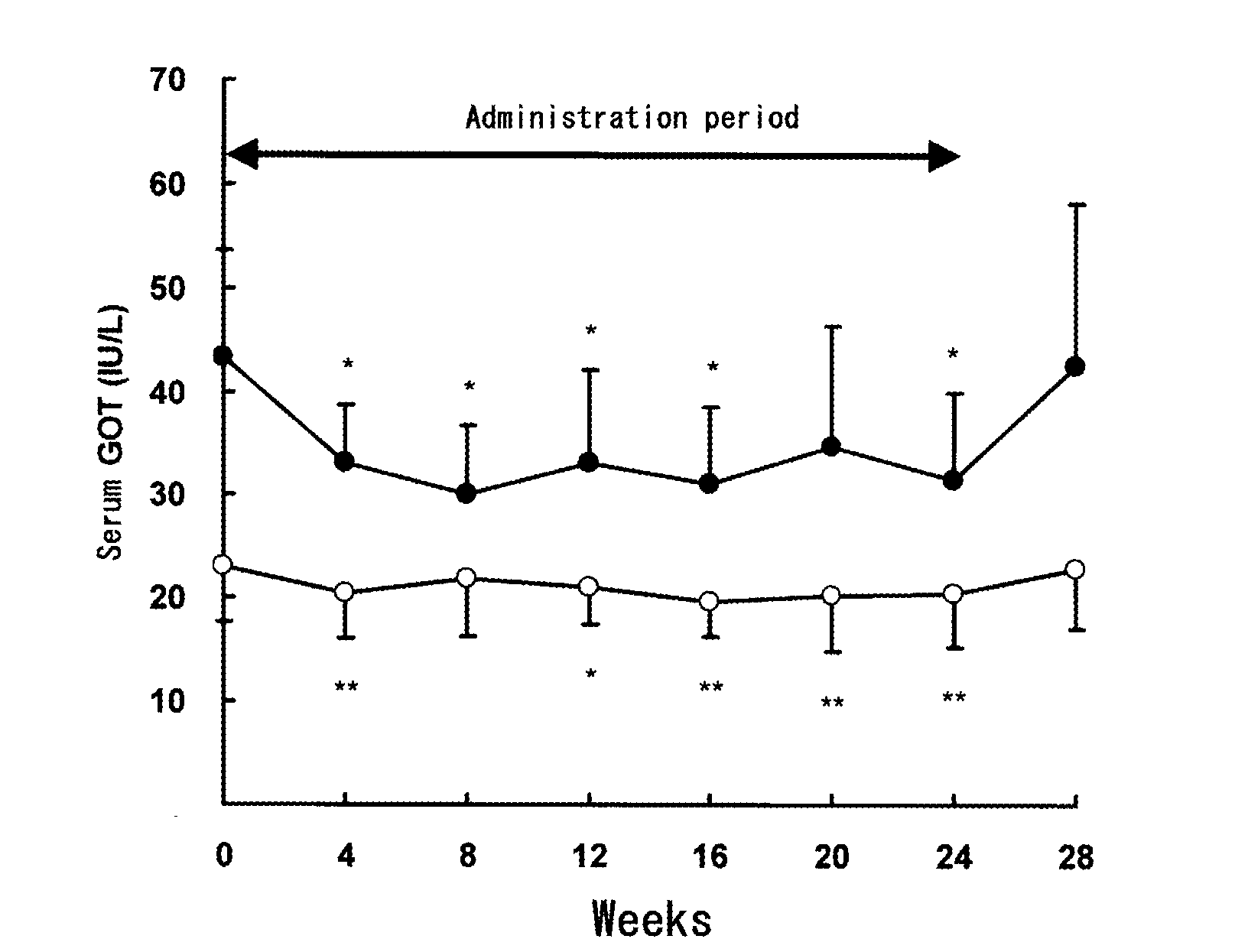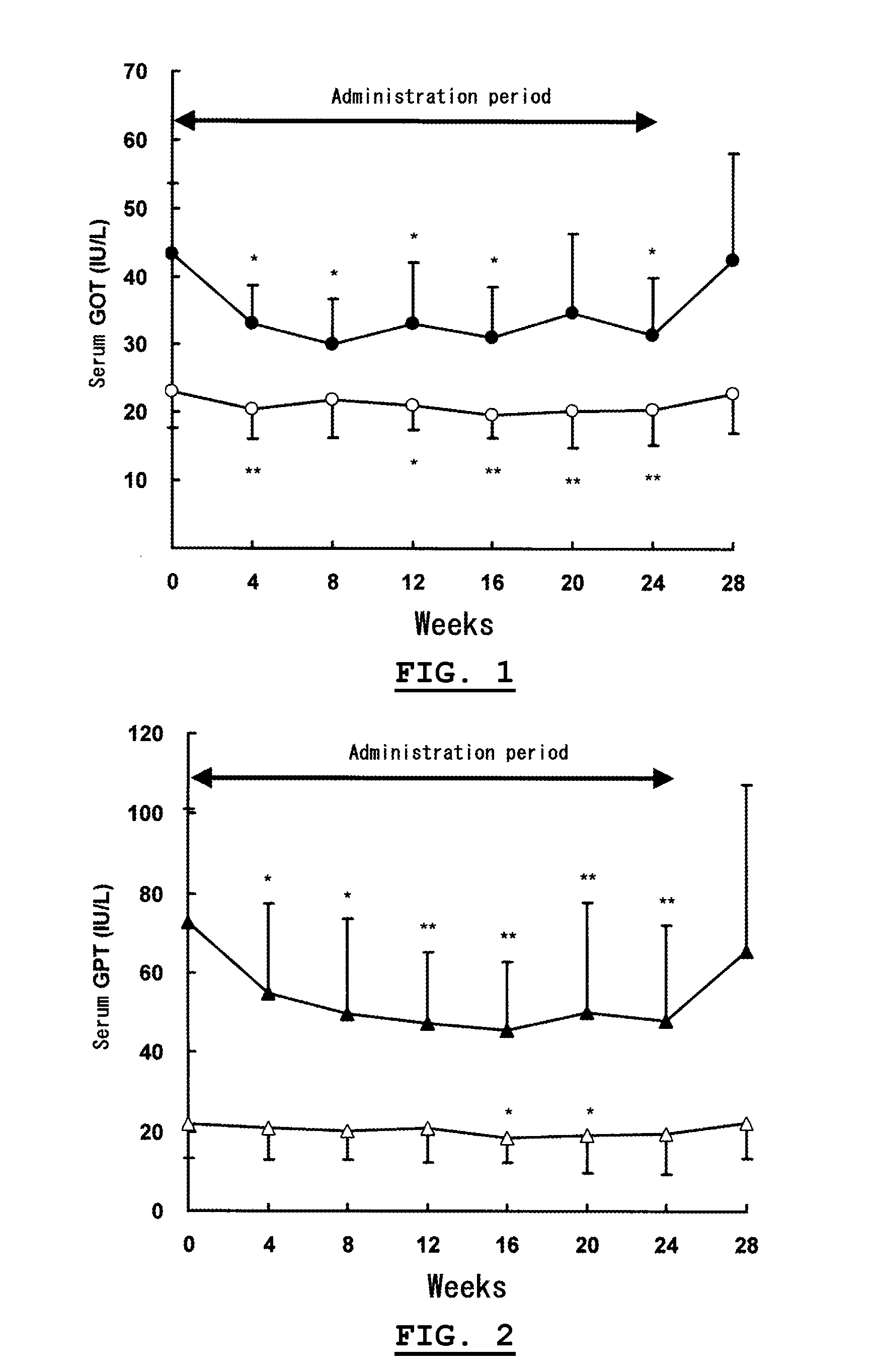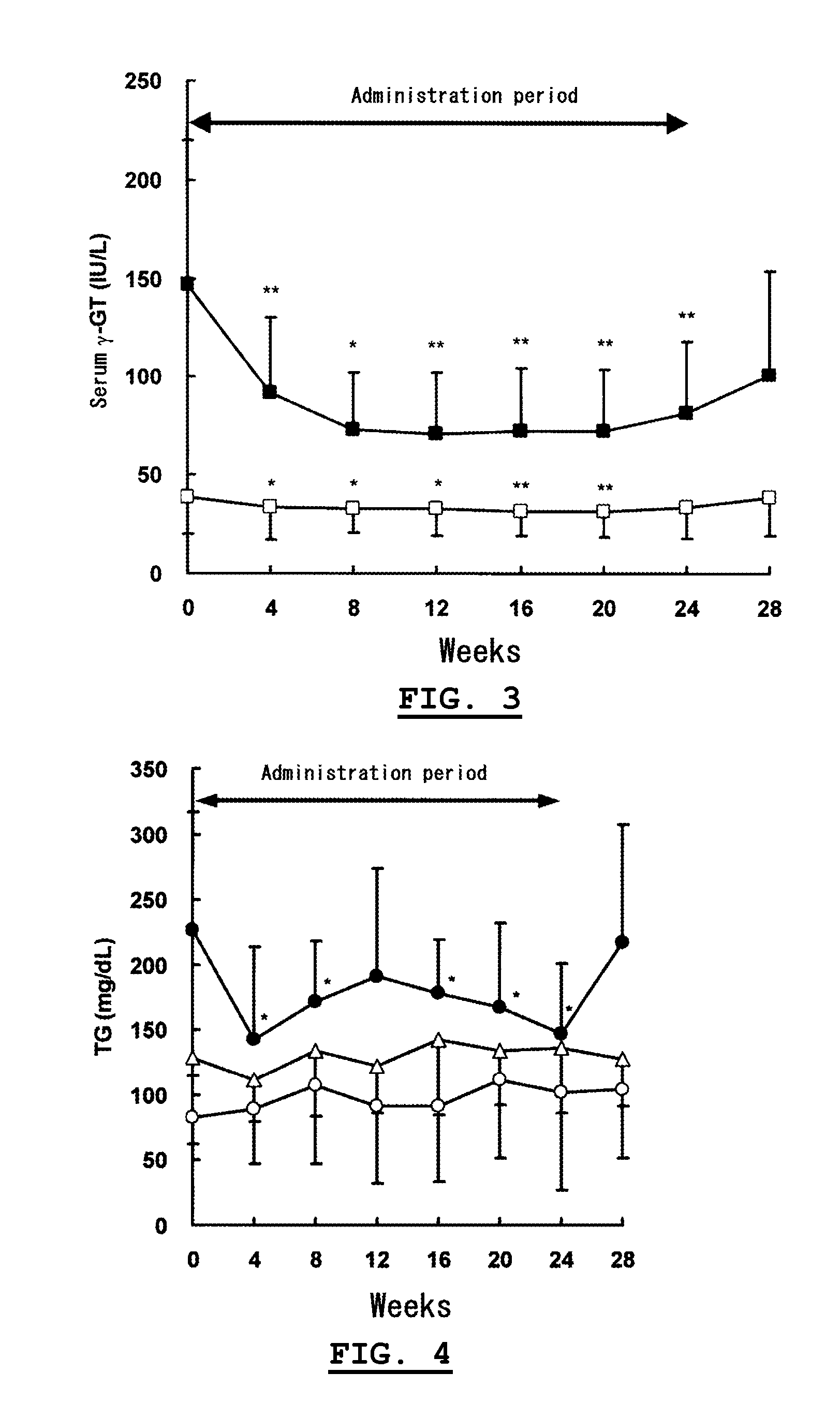Hepatic Function-Improving Agent
a technology of hepatic function and improving agent, applied in the direction of biocide, drug composition, metabolic disorder, etc., can solve the problem of no way to keep liver healthy, and achieve the effect of restoring hepatic functions
- Summary
- Abstract
- Description
- Claims
- Application Information
AI Technical Summary
Benefits of technology
Problems solved by technology
Method used
Image
Examples
experiment 1
Administration Test of α-Glucosyl-Hesperidin on Hamsters
[0027]The animal experiment using hamsters was performed to investigate the influences of the intake of α-glucosyl-hesperidin on hepatic functions.
[0028]A group of five golden hamsters of five weeks old was fed on liberal amount of “NMF Lab Animal Diet Powder” (produced by Oriental Yeast Co., Ltd.) with the administration of “αG-HESPERIDIN PS®” (a powdery α-glucosyl-hesperidin containing 82.8% of α-glucosyl-hesperidin, commercialized by Hayashibara Shoji, Inc.) dissolved in distilled water. α-Glucosyl-hesperidin was administered to the hamsters through a stomach sonde at a dose of 0.25 mmole (193 mg) / kg / body weight every day. After two-week administrations of α-glucosyl-hesperidin, the hamsters were fed for additional three weeks in the same way as described above except that their feed was supplemented with 1% by weight of cholesterol. At four hours after the final administrations, the hamsters were anesthetized and under went...
experiment 2
Chronic Administration Test of α-Glucosyl-Hesperidin on Humans
[0030]On the basis of Experiment 1, the influences of chronic intake of α-glucosyl-hesperidin on hepatic functions for humans were investigated with a volunteered test.
[0031]Twenty-five male adults (26 to 65 years old) in no medication volunteered as subjects. After four-week preobservation, each subject was administered with an α-glucosyl-hesperidin tablet containing 250 mg of “αG-HESPERIDIN PA®” (a powdery α-glucosyl-hesperidin containing 68.1% of α-glucosyl-hesperidin and 19.5% of hesperidin on a dry solid basis, commercialized by Hayashibara Shoji Inc.), 750 mg of “MALTOSE HHH®” (a maltose product commercialized by Hayashibara Biochemical Laboratories, Inc.) and 30 mg of sucrose stearate ester (commercialized by Mitsubishi-Kagaku Foods Corporation) for 24 weeks and two tablets were administered to each subject once before every bedtime. After completion of the administrations, the subjects were observed for additional...
example 1
Hepatic Function-Improving Agent
[0042]Ten parts by weight of L-ascorbic acid, 19 parts by weight of “αG-HESPERIDIN PS®” (a powdery α-glucosyl-hesperidin commercialized by Hayashibara Shoji Inc.), 70 parts by weight of “SUNMALT®” (a maltose product commercialized by Hayashibara Shoji Inc.), and one part by weight of sucrose-stearic acid ester were mixed to homogeneity and made into a tablet comprising α-glucosyl-hesperidin by a conventional tableting method. The product has a readily ingestibility and solubility, and it can be used for supplying vitamin C and used as a hepatic function-improving agent.
PUM
| Property | Measurement | Unit |
|---|---|---|
| pH | aaaaa | aaaaa |
| weight | aaaaa | aaaaa |
| water solubility | aaaaa | aaaaa |
Abstract
Description
Claims
Application Information
 Login to View More
Login to View More - R&D
- Intellectual Property
- Life Sciences
- Materials
- Tech Scout
- Unparalleled Data Quality
- Higher Quality Content
- 60% Fewer Hallucinations
Browse by: Latest US Patents, China's latest patents, Technical Efficacy Thesaurus, Application Domain, Technology Topic, Popular Technical Reports.
© 2025 PatSnap. All rights reserved.Legal|Privacy policy|Modern Slavery Act Transparency Statement|Sitemap|About US| Contact US: help@patsnap.com



